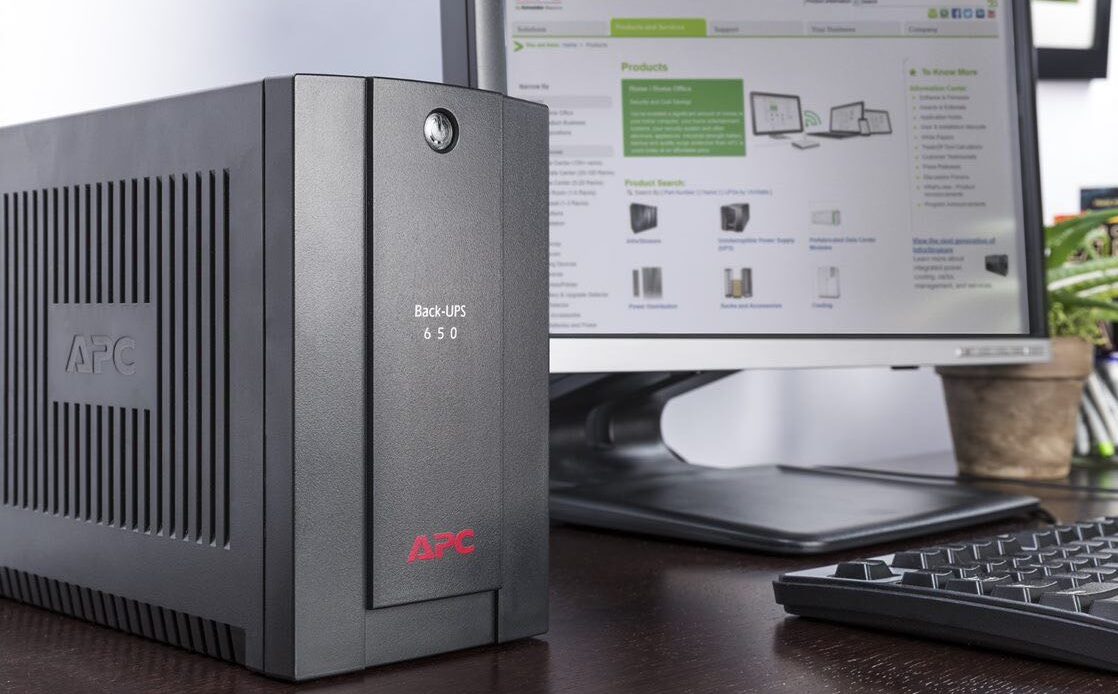
Above: An APC UPS. Photo courtesy Schnieder Electric.
In addition to providing protection against high voltage peaks and fluctuations, a UPS also serves as an energy backup. It carries an internal battery that allows us to make a healthy change from the power that comes from the electricity company to an inverter or power plant. In addition, constant voltage regulation is ensured so that everything connected to the UPS receives a stable level of power, regardless of what happens.
There are three types of UPS:
a) Standby, which receives the electricity supply, charges the battery and at the same time transfers that electricity to the connected component;
b) Interactive Line, which adds voltage regulation and offers greater protection;
c) Double Conversion, which is more robust and allows the connected equipment to be supplied 100 per cent from the UPS battery and never from the electrical supply that comes from outside.
Electronic devices, including Wi-Fi routers and equipment, generally do not use much power, so a UPS will be able to keep them running for a few hours or more, depending on the size. That is usually enough time to avoid an interruption, and also to ensure that you can turn off your devices without losing any work.
If the UPS is already installed, it is a good idea to periodically take stock of any changes in your IT environment as the IT load has likely increased, which means a larger UPS, batteries or additional units may be needed to support the increased load and maintain the desired runtime.
With so much equipment in our homes that require different power requirements, it can be difficult to know exactly what size UPS to use. Schneider Electric has created a UPS selector to help you choose.

